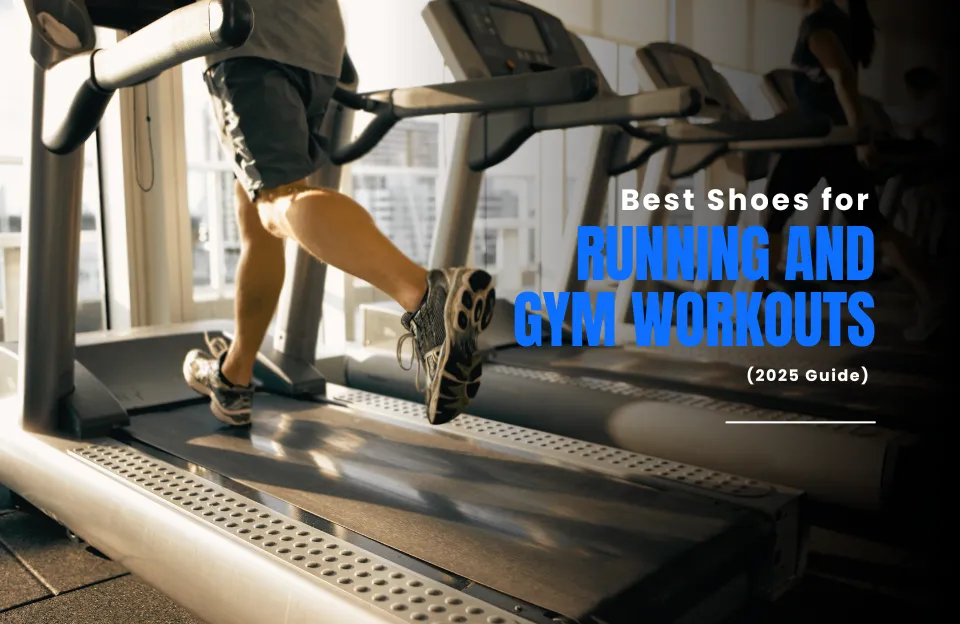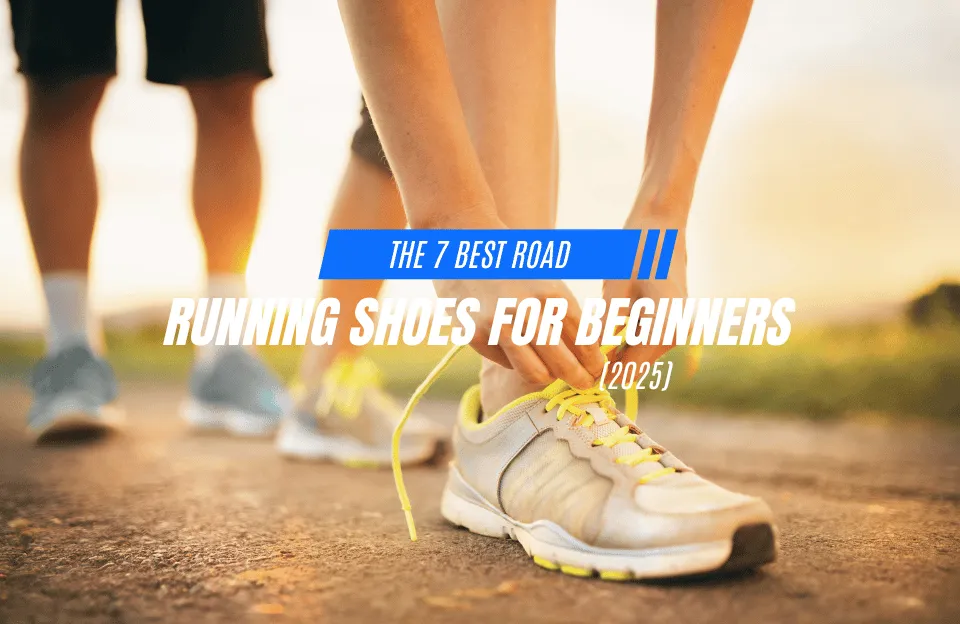
It’s the classic dilemma every time you pack your gym bag. Do you bring your cushioned running shoes for the treadmill, or your flat, stable cross-training shoes for squats and classes? Packing both is a hassle, but choosing one often feels like a major compromise.
If this sounds like you, congratulations—you’re what the fitness world calls a ‘hybrid athlete.’ You’re the type of person who seamlessly transitions from a run to a weightlifting session, sometimes in the same workout. This evolution in how we train has created a real challenge when it comes to gear, especially footwear.
But what if you didn’t have to choose? The search for a single, ‘all-in-one’ shoe that can perform well in both running and gym workouts is over. These versatile shoes are designed to give you the best of both worlds.
That’s why we created this definitive guide. We’ve done the research to help you find the best shoes for running and gym workouts for your specific needs. We’ll break down what makes these shoes different and help you pick the perfect pair, saving you time, money, and space in your gym bag.
(Just so you know: As a runner myself, I only recommend gear I truly believe in. If you purchase through a link on this page, I may earn a small commission that helps me create more guides like this—at no extra cost to you. I really appreciate your support!) – Learn More
Quick Navigation: Our Top Picks for 2025
In a hurry? Here’s a quick look at our top recommendations. Click on any shoe to jump straight to the details.
| Shoe Model | Best For | Key Strength |
|---|---|---|
| Reebok Nano X4 | The True Hybrid Athlete | The best “jack-of-all-trades” solution , offering a fantastic balance of performance and comfort for mixed workouts. |
| Nike Metcon 9 | Stability & Heavy Lifting | The gold standard for stability , creating an incredibly firm and stable platform for lifting heavy weights. |
| Hoka Solimar | Running-Focused Workouts | Blends Hoka’s legendary running comfort with thoughtful features for gym stability , perfect for cardio-heavy routines. |
| Nike Free Metcon 6 | HIIT & Agility Classes | Prioritizes flexibility, lightness, and freedom of movement , allowing your foot to bend and move naturally. |
The Big Problem: Why One Shoe Can’t Be Perfect for Everything
Before we dive into specific models, it helps to understand why finding one perfect shoe is such a challenge. It all comes down to a fundamental conflict in design, rooted in how you move. A shoe that is perfect for one activity is, by its nature, flawed for the other.
What Your Running Shoes Need
Think about what a running shoe does: it’s engineered for repetitive, forward motion. Its primary function is to absorb the impact of each foot strike over and over again, returning energy to propel you forward. To achieve this, running shoes almost always use soft, highly cushioned midsoles.
What Your Gym Shoes Need
Gym and cross-training shoes have the opposite goal. They are built to provide a stable, low-to-the-ground platform. This design is all about maximizing stability and power transfer, which is essential for lifting weights or performing quick, side-to-side agility drills.
Here’s the catch: that soft, cushioned foam in your running shoe is actually a liability in the gym. When you try to lift a heavy weight, the soft midsole will compress, creating an unstable, wobbly platform. This not only wastes your energy but significantly increases the risk of injury.
Our Top Picks for the Best All-in-One Shoes in 2025
Now for the main event. We analyzed the top shoes on the market, combining lab data with real-world feedback to give you clear, honest recommendations.
Best Overall Hybrid Shoe: Reebok Nano X4
If you could only buy one shoe for every type of workout, the Reebok Nano X4 would be our top recommendation. It’s widely considered the best true hybrid shoe because it was built from the ground up to solve this exact problem. It is the quintessential jack-of-all-trades in a field where most shoes are masters of only one.
- Why It Wins: The magic is in its “Lift and Run Chassis system”. This special design creates a heel that becomes stable when you lift, but remains flexible and cushioned when you run or jump. It’s paired with Reebok’s Floatride Energy Foam, which is a responsive foam that makes short runs and box jumps feel significantly more comfortable than they do in other cross-trainers.
- The Bottom Line: While it might not feel as rock-solid as a dedicated lifting shoe for a one-rep max squat, its stability is more than sufficient for the vast majority of gym-goers and functional fitness workouts. For anyone whose routine is a true mix of lifting, HIIT, and short runs, the Nano X4 offers the best all-around balance of performance and comfort.
Best for Stability & Lifting: Nike Metcon 9
For the athlete who prioritizes strength training above all else, the Nike Metcon 9 is the undisputed king. It’s the gold standard for stability, designed specifically for peak performance under a heavy barbell.
- Why It Wins: Its defining feature is a large, rigid Hyperlift plate embedded in the heel. This plastic plate creates an incredibly firm and stable platform, ensuring that all your energy goes into lifting the weight, not into squishing your shoe’s cushion. It also features a massive rubber wrap along the sides, offering unmatched durability and grip for exercises like rope climbs.
- The Bottom Line: This specialization comes at a cost. The same features that make it a beast for lifting make it feel heavy, clunky, and unforgiving during any kind of running. Users consistently describe it as “horrific for running”. This is a specialist’s tool: get it if you’re a serious lifter who only does short sprints, but look elsewhere if you need cardio comfort.
Best for Running-Focused Workouts: Hoka Solimar
If your routine is more ‘run’ than ‘gym,’ the Hoka Solimar is a fantastic choice. It successfully blends Hoka’s legendary running heritage with thoughtful features for gym stability, making it a leading ‘Run-First’ hybrid.
- Why It Wins: The Solimar is exceptionally lightweight and flexible, making it feel agile and comfortable on the treadmill or in a class. While it has that Hoka comfort, its midsole foam is relatively firm compared to other Hoka models. This is a key feature, as it provides enhanced stability for general strength training and bodyweight movements without sacrificing a smooth ride.
- The Bottom Line: This is still a running shoe at its core, so it’s not recommended for heavy or dynamic lifting. It’s the perfect partner for someone whose workouts are 60% or more cardio, with the rest being light weights and machine work. Be aware: many users note that the toebox is narrow, so it might not be ideal for those with wider feet.
Best for HIIT & Agility Classes: Nike Free Metcon 6
For the fast-paced, dynamic athlete who lives for HIIT classes, circuit training, and plyometrics, the Nike Free Metcon 6 is in a class of its own. It’s a specialized shoe that prioritizes flexibility, lightness, and freedom of movement above all else.
- Why It Wins: The ‘Free’ in its name says it all. Lab tests show it’s one of the most flexible cross-trainers ever made, allowing your foot to bend and move naturally through exercises like burpees and box jumps. It’s also remarkably lightweight and earned a perfect score for breathability, keeping your feet cool during intense sessions.
- The Bottom Line: While it’s more flexible, it doesn’t completely abandon stability—it has a firmer heel that can handle moderate weightlifting. However, this shoe is not suitable for heavy, maximal-effort lifting and lacks the durability for things like rope climbs. It’s the perfect choice for high-energy classes where agility is key.
FAQs: Best Shoes For Running And Gym Workouts
1. Can’t I just use my regular running shoes for the gym?
While it’s convenient, we don’t recommend it. Most regular running shoes, especially those with high stacks of soft foam, are inherently unstable for gym work. The foam will compress under weight, creating a wobbly base that can increase your risk of injury and compromise your form. They are a high-risk, high-compromise option for anything beyond the lightest machine work.
2. What’s more important for a hybrid shoe: firm cushioning or a low heel-drop?
Both are important, but midsole firmness is the single most critical factor for a safe hybrid shoe. A firm midsole prevents the shoe from compressing under weight, giving you the stable base needed for lifting. Heel-to-toe drop is more of a fine-tuning feature that affects your posture in certain lifts, like squats.
3. Are all-in-one shoes less durable?
Not necessarily, but you need to look at the outsole. A good hybrid shoe will have a durable, full-rubber outsole to withstand abrasion on gym floors and varied surfaces. Many lightweight running shoes save weight by leaving soft midsole foam exposed on the bottom, which can get shredded by gym activities like lateral drills. Always check for good rubber coverage.
4. What’s the difference between a “cross-trainer” and a “hybrid runner”?
It’s all about their starting point. A cross-trainer (like the Nike Metcon) is a gym shoe first, built for maximum stability, that can handle short runs. A hybrid runner (like the Hoka Solimar) is a running shoe first, built for comfort, that has been adapted for light gym work. To find out which philosophy is right for you, it’s important to understand your main activities. We have a detailed guide on [how to choose between cross-trainers and hybrid runners here].
5. How do I know when to replace my hybrid shoes?
Look for both physical and sensory cues. If the cushioning feels flat and unresponsive, the tread on the outsole is worn smooth, or the upper has rips or holes, it’s time to replace them. Most importantly, if you start feeling new aches in your feet or joints, your shoes are likely no longer providing proper support, as the foam inevitably breaks down over time and with use.
The Final Verdict: Should You Really Buy Just One Shoe?
So, after all that, what’s the final answer? Can one shoe really do it all? The honest answer is: it depends on your priorities. There is no single “best” all-in-one shoe. The perfect choice is a personal calculation based on the workouts you love to do.
If your goal is to find the single best shoe to minimize compromise, our research and testing point to the Reebok Nano X4. It is the most intelligently designed shoe for the true hybrid athlete, offering a fantastic balance that works well for the vast majority of workouts. It’s the best “jack-of-all-trades” solution available.
However, if you’re asking for the best possible strategy for performance and safety, the answer is different. The unequivocally superior approach is a two-shoe rotation. This is the gold-standard approach for any serious hybrid athlete because it eliminates all compromise. Owning a dedicated running shoe for cardio and a dedicated cross-trainer for the gym ensures you have the correct tool for every job. You get optimal cushioning for running and maximum stability for lifting, which helps you perform your best and reduces injury risk in every activity.









